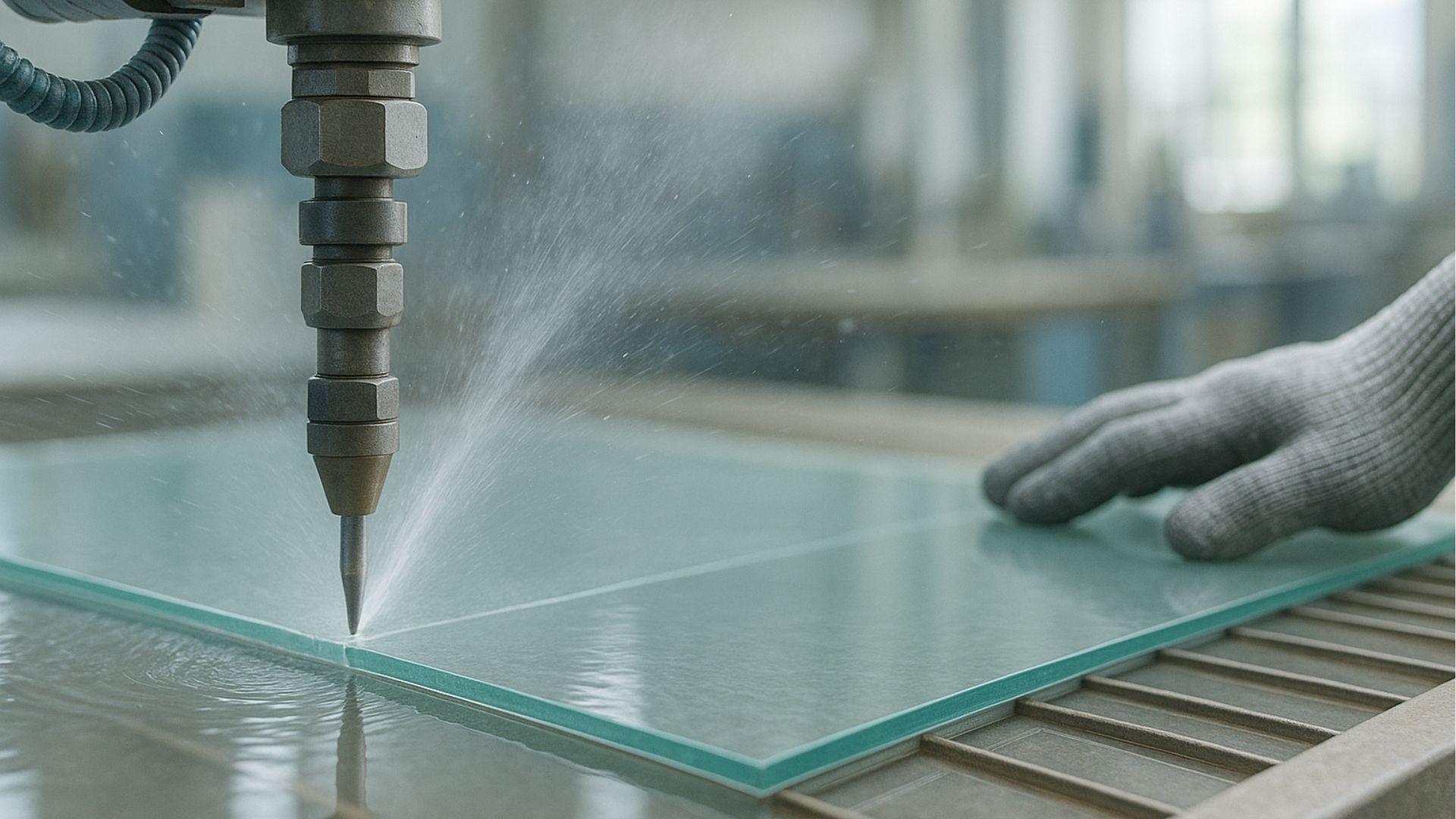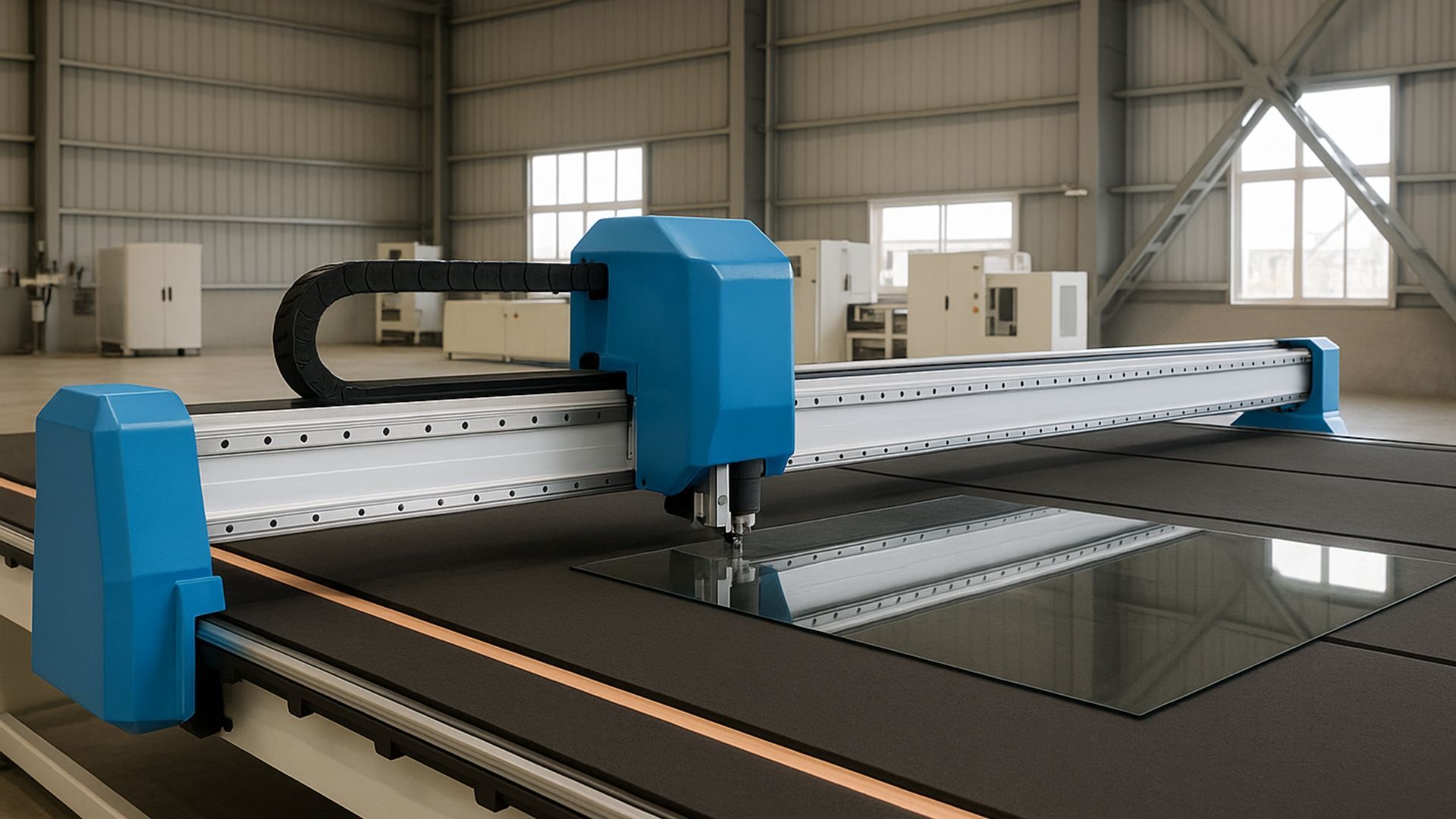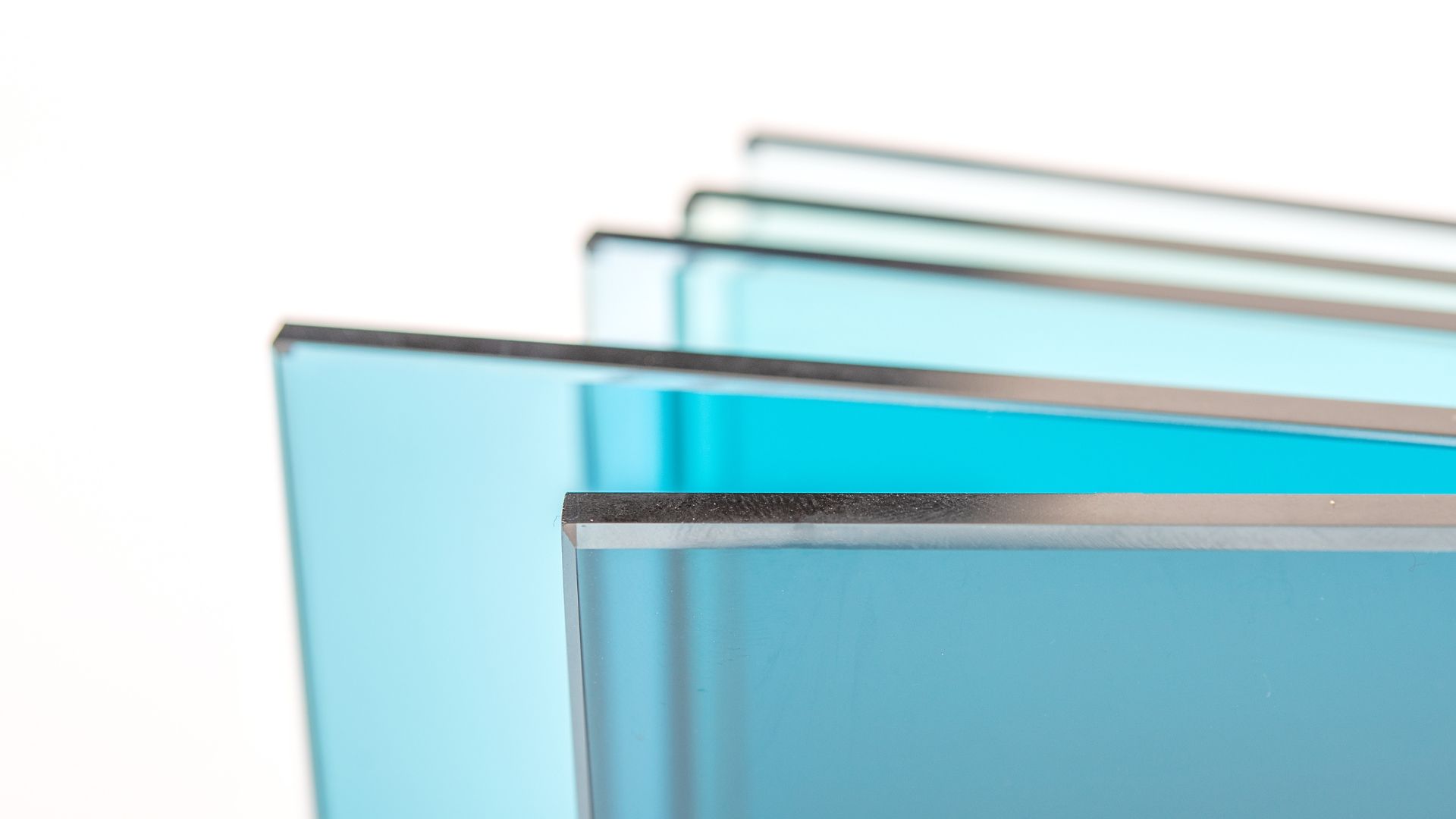Glass water jet cutting: how it works
Share this blog:
How are complicated glass products cut? Processors often use a method called water jet cutting. Discover how the process works.

Perhaps one of humanity's greatest achievements is our ability to harness the elements to our advantage.
Wind turbines and solar panels are obvious examples – but did you know that a huge range of materials can be cut with water?
Water jet cutting is an industrial method that involves shooting a high-pressure jet of water mixed with an abrasive substance (often garnet).
And when we say "high pressure", we mean high pressure. These jets of water can be up to 90,000 pounds per square inch (psi).
Water jet cutting can cut pretty much anything – from metal to concrete, from plastic to glass.
In the world of glass, the main exception is toughened glass. This can only be cut before it's toughened. If you attempt to cut it once it's out of the furnace, you'll be left with lots of tiny glass pieces.
As well as being highly versatile, water jet cutting can create intricate shapes quickly and cost-effectively. And it does so without causing heat distortion, cracking, melting or other kinds of damage.
Different glass processors use different cutting methods. But for versatility, precision and the quality of the end result, water jet cutting is hard to beat. The coldness of the water makes it ideal for glass, which can be sensitive to thermal pressure.
Mirrors, shop fits, exhibition stands, partitions – these are just some of the industrial applications of glass water jet cutting. In this article, we take a look at this most powerful and precise of cutting methods.
What are the key benefits of glass water jet cutting?
In our view, there are three key benefits of glass water jet cutting: it's versatile, it's precise and it's clean.
Versatile, because water jet cutting can cut almost any type of glass – from standard annealed glass all the way up to super-tough laminated products. It can even cut through stacks of glass. (If you want to cut toughened glass, however, you have to do that before it's fired – never after.)
Precise, because it can produce highly intricate glass shapes that hand-cutting or CNC cutting struggle to accomplish. If you see an elaborate glass shape, chances are it was cut by a water jet.
And clean, because the results are virtually blemish-free. Water jet cutting is a cold cutting method, and it doesn't vibrate the glass. This means the glass doesn't experience heat distortion and the edges are satin-smooth.
Sometimes, a CNC machine will do the job. But for versatility, precision and a clean finish, water jet cutting is often the way to go.
How does water jet cutting work?

Water jet cutting is not unlike a garden hose. Water gets pressurised and fired out of a tube.
The difference is that the water inside a water jet cutting machine can be up to 90,000 psi and is forced out of the hose at up to three times the speed of sound.
The water is mixed with an abrasive substance – typically garnet. This often used in industrial contexts, such as jewellery making.
We've differentiated water jet cutting from CNC cutting, but water jet cutting machines use CNC technology too. The machine is programmed and the jet follows the inputted design.
What can you cut with water jets?
Water jet cutting has versatility on its side. It can cut an astonishing array of materials: porcelain, stoneware, metals, Perspex, acrylic, granite, marble, foam, rubber and wood.
It can also cut refractory materials like bricks and ceramics and a wide range of glass products. These different materials can be layered and cut in bulk.
Our speciality is glass – and water jet cutting machines can be used to cut plenty of different types of glass to produce different products.
Most relevant to our expertise, water jets can cut laminated glass products. These are types of glass produced specifically for "critical locations" where an extra layer of safety is required.
Laminated glass is up to six times as strong as standard annealed glass and has a distinctive breakage pattern. Despite this difference, it can still be cut into intricate shapes by water jets.
What products can be made with water jet cutting?
Lots of products can be manufactured and processed by water jet cutting. That includes:
- Tabletop inlays
- Shower screens
- Glass doors
- Holes in glass doors for hardware
- Balustrades
- Partitions
- Floors
- Stair treads
It's an essential tool in the glass processor's arsenal that makes a wide range of structural glazing possible.
Water jet cutting vs CNC cutting
Water jet cutting is ideal for glass, whereas CNC cutting machines tend to be used for softer materials.
CNC machines use rotating tools to mill materials. This means they offer a wider range of edge finishes than water jet cutters, which only provide a single smooth edge.
On the other hand, water jet cutting enables processors to create more complex and intricate shapes than a CNC machine.
Neither method is better – it all depends on what a processor is trying to achieve. For laminated glass, however, it's often the best method available.
Other ways to cut glass
Alternative methods of cutting glass include cutting wheels, CO₂ lasers and filament cutting. You can learn more in our guide to how glass suppliers cut glass.
More questions about water jet cutting answered
Are there water jet cutters for home use?
Yes, there are water jet cutters marketed for home use. These are smaller "desktop" versions that run on home power and can be used for smaller projects. They're mostly used by hobbyists and artists working with stone or marble.
What is multi-axis water jet cutting?
Multi-axis water jet cutting machines can cut up to five axes on a piece of glass. This allows for complex 3D cuts, bevelled edges and detailed contours.
What is the difference between an abrasive jet and pure water jet or water-only cutting?
Abrasive jets combine water and an abrasive, often garnet. Pure water jet or water-only cutting cuts with water but no abrasive. This latter method is often used for softer materials like wood and rubber.
At ToughGlaze, we specialise in high-quality, custom-cut toughened glass and laminated glass. We can cut glass to any size or shape and process it to your exact specifications. To request a quote, contact our experts online or call 0208 838 4400.









